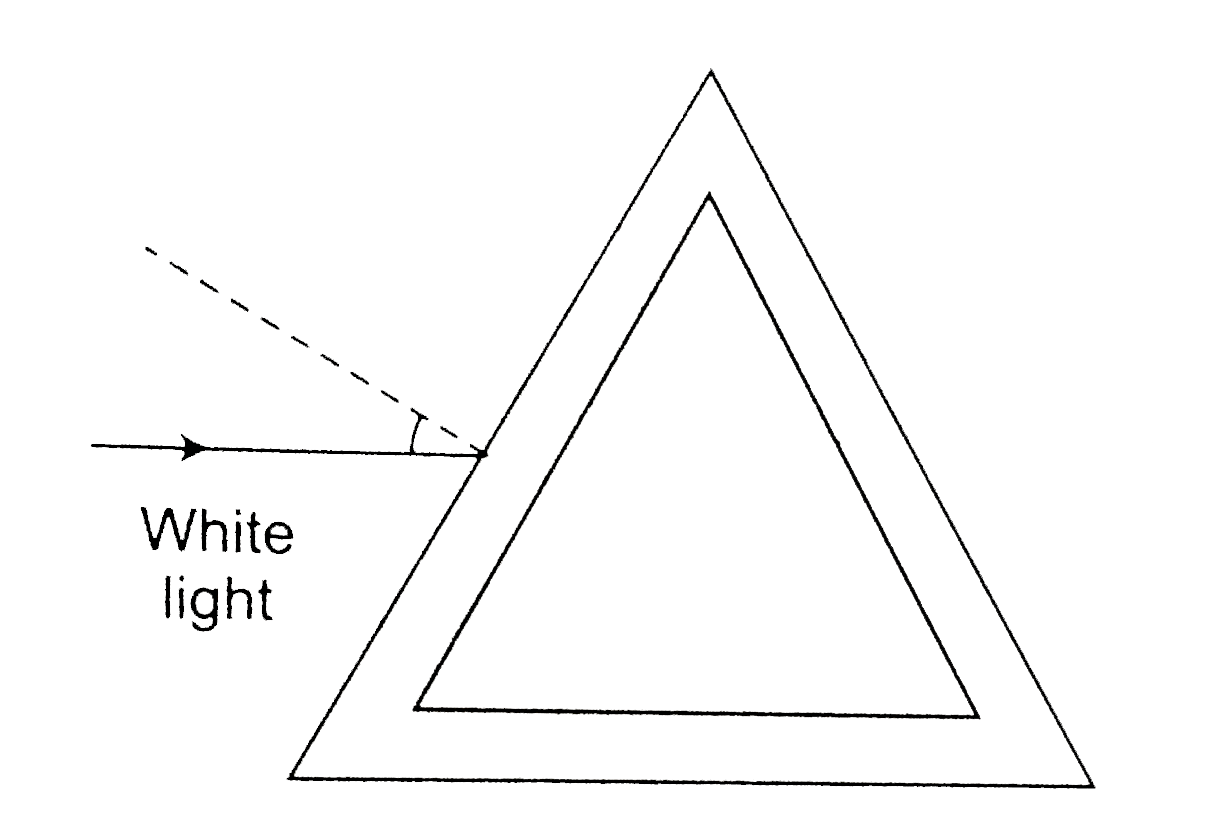A beam of light is incident on a glass slab of refractive index 1.5 at an angle of incidence of 45o. Find the ratio of the width of refracted beam to the incident beam.
To solve the problem of finding the ratio of the width of the refracted beam to the incident beam when a beam of light is incident on a glass slab of refractive index 1.5 at an angle of incidence of 45 degrees, follow these steps:
Step 1: Understand the relationship between the widths of the beams
The ratio of the width of the refracted beam (W_r) to the width of the incident beam (W_i) can be expressed using the cosine of the angles of refraction (r) and incidence (i):
WrWi=cos(r)cos(i)
Step 2: Identify the given values
- Angle of incidence, i=45∘
- Refractive index of glass, μ=1.5
Step 3: Use Snell's Law to find the angle of refraction
According to Snell's Law:
μ=sin(i)sin(r)
Substituting the known values:
1.5=sin(45∘)sin(r)
Since sin(45∘)=1√2:
1.5=1√2sin(r)
Rearranging gives:
sin(r)=1√21.5=11.5√2=11.5×1.414≈0.471
Step 4: Calculate the angle of refraction
To find r, take the inverse sine:
r=sin−1(0.471)≈28.09∘
Step 5: Calculate the cosines of the angles
Now calculate cos(r) and cos(i):
- cos(45∘)=1√2≈0.707
- cos(28.09∘)≈0.848
Step 6: Substitute into the width ratio formula
Now substitute these values into the width ratio formula:
WrWi=cos(28.09∘)cos(45∘)=0.8480.707≈1.198
Step 7: Final Answer
Thus, the ratio of the width of the refracted beam to the incident beam is approximately:
WrWi≈1.198
The ratio of the width of the refracted beam (W_r) to the width of the incident beam (W_i) can be expressed using the cosine of the angles of refraction (r) and incidence (i):
WrWi=cos(r)cos(i)
- Angle of incidence, i=45∘
- Refractive index of glass, μ=1.5
According to Snell's Law:
μ=sin(i)sin(r)
Substituting the known values:
1.5=sin(45∘)sin(r)
Since sin(45∘)=1√2:
1.5=1√2sin(r)
Rearranging gives:
sin(r)=1√21.5=11.5√2=11.5×1.414≈0.471
To find r, take the inverse sine:
r=sin−1(0.471)≈28.09∘
Now calculate cos(r) and cos(i):
- cos(45∘)=1√2≈0.707
- cos(28.09∘)≈0.848
Now substitute these values into the width ratio formula:
WrWi=cos(28.09∘)cos(45∘)=0.8480.707≈1.198
Thus, the ratio of the width of the refracted beam to the incident beam is approximately:
WrWi≈1.198
Topper's Solved these Questions
- RAY OPTICSBOOK - AAKASH SERIESCHAPTER - RAY OPTICSEXERCISE - PROBLEMS ( LEVEL-II)
60 Videos
- RAY OPTICSBOOK - AAKASH SERIESCHAPTER - RAY OPTICSEXERCISE - EXERCISE (VERY SHORT ANSWER QUESTIONS )
53 Videos
- PRACTICAL PHYSICSBOOK - AAKASH SERIESCHAPTER - PRACTICAL PHYSICSEXERCISE - LECTURE SHEET LEVEL-II (ADVANCED) Linked Comprehension Type Questions
4 Videos
- SEMICONDUCTOR DEVICESBOOK - AAKASH SERIESCHAPTER - SEMICONDUCTOR DEVICESEXERCISE - EXERCISE - III
3 Videos
Similar Questions
A light ray is incident on a transparent slab of refractive index μ=√2 at an angle of incidence π/4. Find the ratio of the lateral displacement suffered by the light ray to the maximum value which it could have suffered.
View SolutionA ray of light falls on a glass plate of refractive index μ=1.5.
What is the angle of incidence of the ray if the angle between the reflected and
refracted rays is 90∘?
View Solution
Knowledge Check
A ray of light strikes a transparent rectangular slab of refractive index √2 at an angle of incidence of 45∘. The angle betweent the reflected and refracted rays is
A75∘B90∘C105∘D120∘
A ray of light falls on a glass plate of refractive index μ=1.5.
What is the angle of incidence of the ray if the angle between the reflected and
refracted rays is 90∘?
View SolutionA ray of light is incident perpendicularly on a glass slab. The angle of incidence is 900.
View SolutionA beam of white light is incident on a hollow prism of glass. Then

View SolutionA ray of light passes from glass, having a refractive index of 1.6, to air. The angle of incidence for which the angle of refraction is twice the angle of incidence is
View SolutionA ray of light is incident on a parallel slab of thickness t and refractive index n. If the angle of incidence θ is small, than the lateral displacement in the incident and emergent ray will be
View SolutionA ray of light is incident on the surface of a glass plate of refractive index √3 at the polarising angle . The angle of incidence and angle of refraction of the ray is
View SolutionUnpolarized light is incident on a plane glass surface having refractive index . The angle of incidence at which reflected and refracted rays would become perpendicular to each other is :
View Solution
